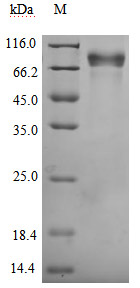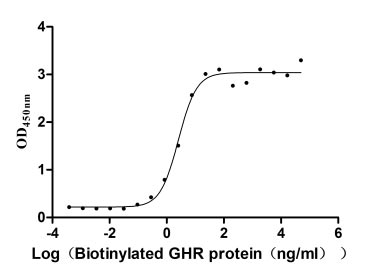The recombinant human GHR is an active protein expressed from mammalian cells, with a C-terminal mFc-Avi-tag. Its expression region is the DNA fragment encoding the amino acid residues 27-264 of the human GHR protein. The purity of this GHR protein is greater than 95% measured by SDS-PAGE. This recombinant GHR protein migrated to the band with a molecular weight of approximately 67 kDa on the gel. Its endotoxin level is less than 1.0 EU/ug determined by the LAL method. And its bioactivity has been validated in the ELISA. In the functional ELISA, this Biotinylated human GHR binds to the human GH1, with an EC50 constant of 2.067-3.208 ng/ml. This biotinylated GHR protein could be used to isolate the GHR antibodies from the samples for subsequent analyses with high sensitivity. It is in stock now.
GHR, an amino acid dimeric receptor, is widely expressed in GH target cells. The GH–GHR–IGF1 axis plays significant roles in somatic growth, including cell proliferation, differentiation, division, cell cycle control, immunity, and survival. Aberrations in GHR signaling have been linked to various diseases and chronic conditions such as cancer, aging, and inflammation.







